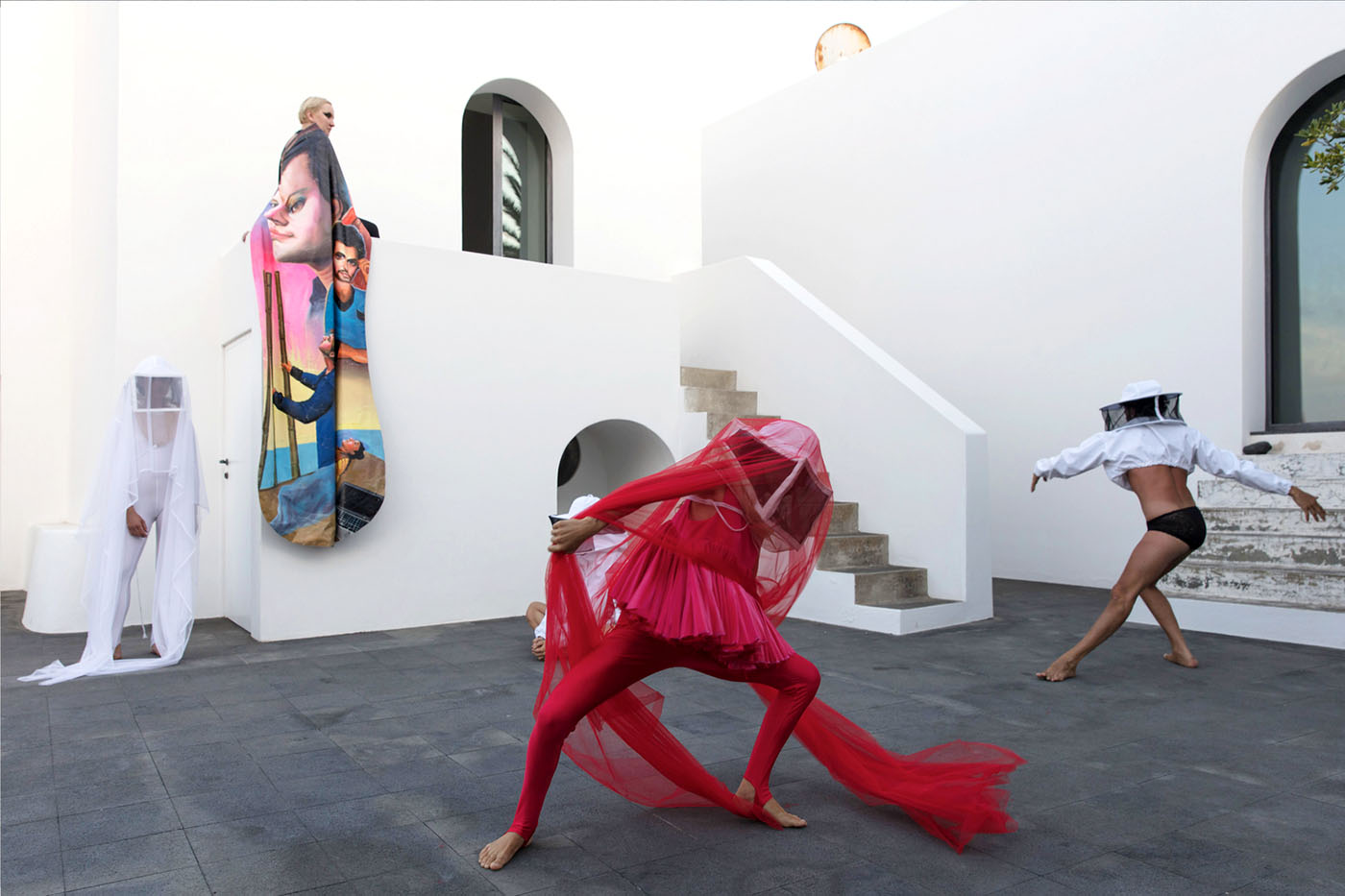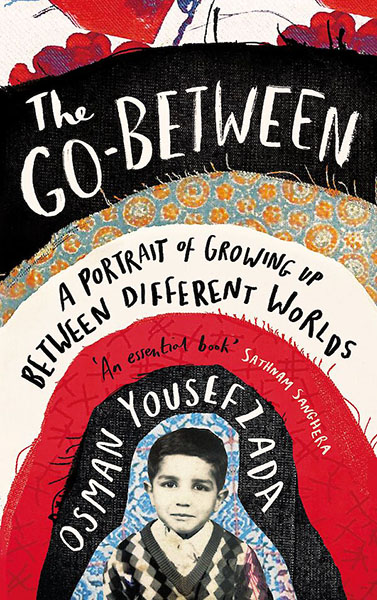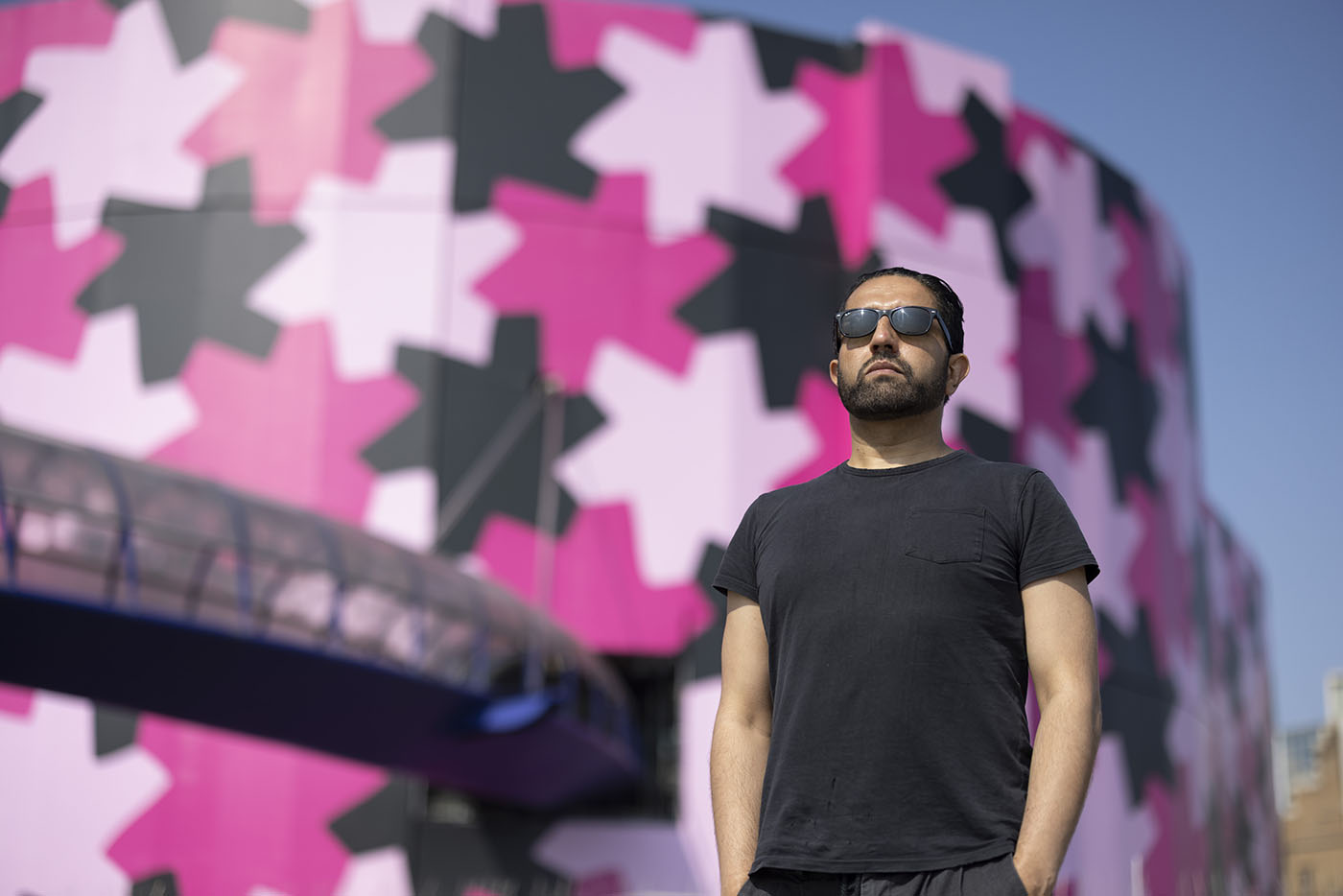
The Go-Between: A Portrait of Growing Up Between Different Worlds, a memoir by Osman Yousefzada
Canongate 2022
ISBN 1786893525
Hannah Fox
The terraced house where Osman Yousefzada grew up in Birmingham had net curtains that were permanently drawn, blocking light and preventing anyone from seeing in through the windows. And yet, in The Go-Between, Yousefzada allows his readers to look behind the curtains and witness the moments of pleasure, as well as the acts of violence, that take place in his childhood home.
The house is in a red-light district in the Balsall Heath area of Birmingham, where prostitutes live side by side with members of various immigrant communities. Osman’s family belongs to the highly religious Pashtun community, members of whom migrated to England from a remote region near Pakistan’s border with Afghanistan, people he describes as “the least integrated in south Birmingham.”

Osman must learn to navigate his way not only between the two worlds of English culture and Pashtun traditions, but also between the orthodox world of his own community and the more “modern” world inhabited by many of their Punjabi or Kashmiri neighbors.
Yousefzada emphasizes the uniqueness of the social environment he grew up in, explaining that “our Pashtun community, all from one region back home and guided by the imam, was a very distinct subculture.” The Go-Between portrays Osman’s experience of growing up between these different worlds with humor and pathos.
Within the home, strict gender roles mean that there are two further worlds that the young Osman learns to move between: “the front room, the world of men, and the sanctity of the back rooms, the women’s chambers.” It is in the women’s space that Osman feels the most free. As a child, he views the backroom sewing salon where his mother works as a tailor, and where a constant stream of women visit her each day, as a place of peace and beauty. Behind the dividing curtain that separates this space from the front room where the men sit, is a world where women from various backgrounds and cultures come together. Osman calls it a “mecca for all kinds of women who wouldn’t normally have met anywhere else: the Indian-Africans, the Ismailis and the Shias, the Sikhs, the Hindus, the occasional white folk, the Muslims.” This is a women’s space that Osman’s father isn’t allowed to enter when visitors are there, and so it is also a place of temporary sanctuary from the domestic violence that is experienced by his mother and the children at other times. As a young boy, Osman is able to spend time in both the men’s and the women’s worlds, although his mother and sisters are not permitted to go out to the shops or even to attend the local mosque. His sisters are removed from school by their parents around the age of eleven and from then on expected to remain in purdah at home. Looking back, Yousefzada expresses a sense of sadness that he failed to notice his sisters’ misery at the time, explaining that “few of us questioned the girls’ sudden retreat from daily life. Not many in our community sent their girls to secondary school back then.”
Despite these restrictions placed on the women in Osman’s family and the wider community, his mother thrives in her job as a tailor, creating beautiful clothes for countless local women. She is a “sculptor” and a “magician” in Osman’s eyes and his pride in her work is apparent throughout his beautiful descriptions of the colorful creations that she makes. It is worth noting that Osman often refers to his mother by her name, Palwashay, in his memoir. This seemingly simple act of naming can be read as a powerful statement within a patriarchal context where women are often not named. Osman mentions elsewhere that, “Women’s names were hidden, not to be written down for the world to see; even when Mum’s parents wrote to her, it came in her husband’s name.” By naming Palwashay, Yousefzada is acknowledging her individual identity apart from her role as a wife a mother. In many ways, The Go-Between is a tribute to his mother, and it is clear that she has influenced Yousefzada in his own love of fashion.

Osman Yousefzada’s eponymous fashion label, founded in 2008, is a luxury womenswear brand sought out by celebrities worldwide, and his memoir is bursting with examples of how he was drawn to appreciate the beauty of women’s clothing from a young age. In a humorous scene early in the book, a young Osman creates a shrine for his sister’s Barbie, dressing the doll in a homemade green dress which he then covers with a miniature pink burka he makes from offcuts of his mother’s fabric. From the prostitutes on the street to the relatives and neighbors who visit his mother’s salon, Osman notices every detail of the women’s clothing and jewellery. Even when the Prime Minister, Margaret Thatcher, is mentioned, Osman seems as interested in her immaculate hairstyle and in the silky pussy bows and pearls she wears, as he is in her politics.
The Go-Between pulsates with detailed descriptions of color, patterns, and textures. Fabrics glow and shimmer, bringing a sense of movement and life that is lacking in the dull sameness of the clothing worn by the men, who all have “the same brand of mottled acrylic cardigans in varied shades of brown and khaki.”
Although there are numerous scenes from Osman’s early life highlighting his interest in fashion, it would have been interesting to read more about his later years after he leaves Birmingham for London, and to understand how he makes the transition into working as an artist and fashion designer. While his time at SOAS, University of London, is touched upon, the final section of the book could have been more developed. However, it is also clear that in writing the book, Osman is charting the journey of his family as much as his individual story, and recalling his memories perhaps for his own sake as much as for that of the reader. In his Author’s Note, he refers to the book as “a series of vignettes formed around my memories.” In each chapter he paints pictures of scenes from his early life that aren’t necessarily intended to progress in a linear manner. They can be read rather as images in a gallery, or photos in an album that each tell their own story.
Storytelling is a recurring theme in The Go-Between, and various characters are known for their story-telling abilities. Osman’s father, although he cannot read, tells entertaining stories that have been passed down from his grandmother. Another character, Makmalbakt, is a widow who tells stories and riddles that “seem to make her grow bigger and bigger, like a genie, as the stories come alive.” This power of stories to bring life is something that Osman also finds in books. He goes to comical lengths to get hold of as many books as possible for the library he creates in his bedroom — even stealing them when he has the chance.
With his love of stories, Osman has a tendency to exaggerate at times, telling “fantastical stories” about his trip to Pakistan to his classmates when he returns to school, as well as inventing stories about his family background to impress new university friends. He says of these tall stories that, “Sometimes I forgot who I was and where I came from.” The Go-Between is his attempt to remember. There is a disclaimer in the Author’s Note, that “as with all memories recollection sometimes meets fiction.” Whether or not The Go-Between is an accurate record of Osman’s childhood, it is nevertheless an interesting and poignant story of growing up in multicultural Birmingham in the eighties and nineties, as well as a celebration of the pleasures of fashion and the power of storytelling.



